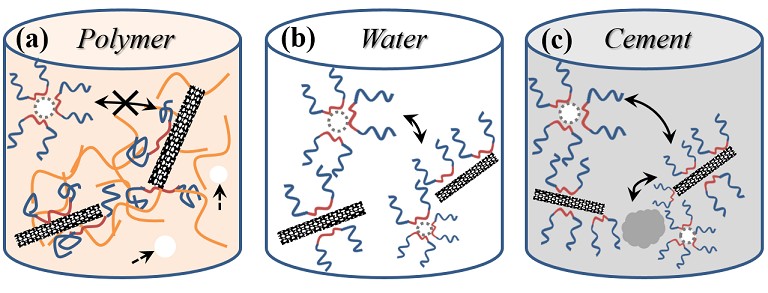The multiple roles of a dispersant in nanocomposite systems
The loading of individual carbon nanotubes (CNTs) in matrices provides state-of-the-art nanocomposite reinforcement at low CNT concentrations. The dispersion of the CNTs in the matrix is often assisted by surfactants (termed also dispersants), which de-bundle the CNT agglomerates. Despite the critical role of the dispersants in this process, their effect on the properties of the nanocomposite has not been suffi- ciently studied. In the current study, we elucidate the influence of freeze-dried dispersant-CNT on the performance of polymeric and cementitious nanocomposites. We show that the dispersant (Pluronic) is crucial for exfoliating the CNTs in both types of nanocomposite, whereas it also acts as a plasticizer e thus lowering the mixture's effective viscosity e in cementitious matrices. We identify the optimal nanomaterial concentration (ONC) in each nanocomposite system, namely, the critical filler concentration in which optimal mechanical properties are obtained, and above which they degrade dramatically due to the formation of air voids that can initiate mechanical failure. Importantly, the effect of the dispersant on the nanocomposite system e and, accordingly, the origin of the resulting air voids e is different between polymeric and cementitious matrices. In polymers, a high filler concentration increases the viscosity, and, consequently, entraps air voids in the matrix during mixing. In cement, by contrast, the dispersant stabilizes the air and leads to the formation of foam in the matrix. Taken together, our findings indicate that the behavior of the dispersant throughout the composite preparation process e both in the fresh mixture and in the hardened state e should be considered when employing dispersants for use in applicative composite systems.
Nadiv, Roey, et al. "The multiple roles of a dispersant in nanocomposite systems." Composites Science and Technology 133 (2016): 192-199.


